A chronically low fertility rate, and a rapidly aging population, reduces the size of the workforce — with the proportion of young people diminishing too. This is a new challenge for the civil service, which is capable of tackling problems where precedents are available. Do we need a high-level population policy bureau? Oswald Chan reports from Hong Kong.
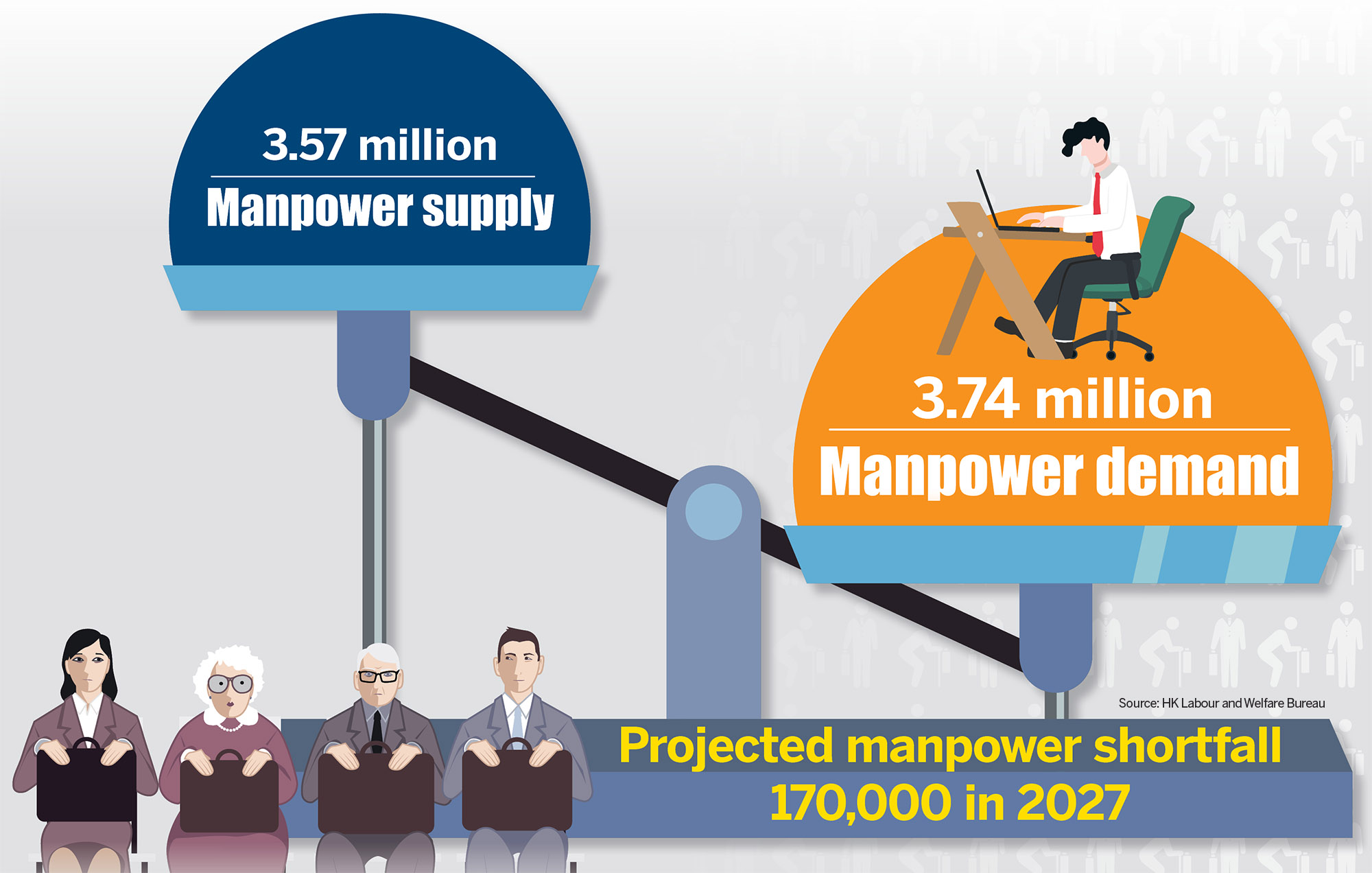
In 2002, the Hong Kong Special Administrative Region government recognized the need for long-term, integrated, cross-functional planning. It launched the “Report of the Task Force on Population Policy” in 2003. Subsequently in 2007, the Steering Committee on Population Policy (SCPP) was established, chaired by the chief secretary for administration. The SCPP was expanded in 2012 to include external professionals, for more diverse inputs.
READ MORE: Sky’s the limit in the ‘silver pot’
In January 2015, the government released the “Population Policy — Strategies and Initiatives” report. Mission accomplished? The SCPP was reconstituted to include non-official members, and the government proceeded to implement initiatives from the report. The SCPP was disbanded in June 2017. The Human Resources Planning Commission (HRPC) was established in April 2018 to deliberate and drive population policy matters.
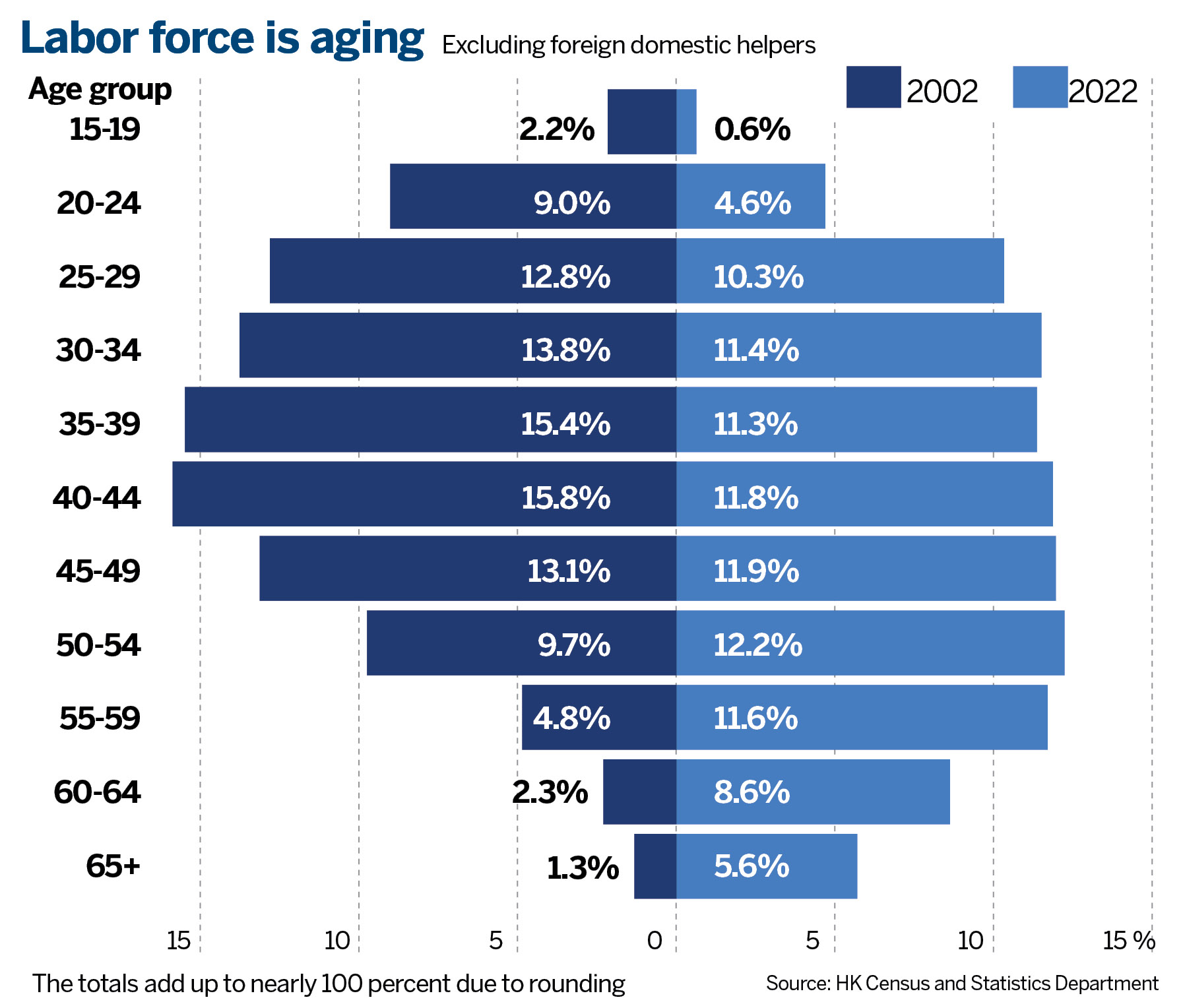
In a written response to legislator Eunice Yung Hoi-yan in April 2023, the Secretary for Labour and Welfare Chris Sun Yuk-han said that the government had no plans to reinstate the SCPP. It placed the responsibility for implementing the SCPP report with the HRPC, under the Labour and Welfare Bureau.
Declining fertility, an aging population, a wave of emigration, and low senior and female labor participation are forces shaping the structure of the working population with serious implications for labor availability, productivity, economic growth and public finance.
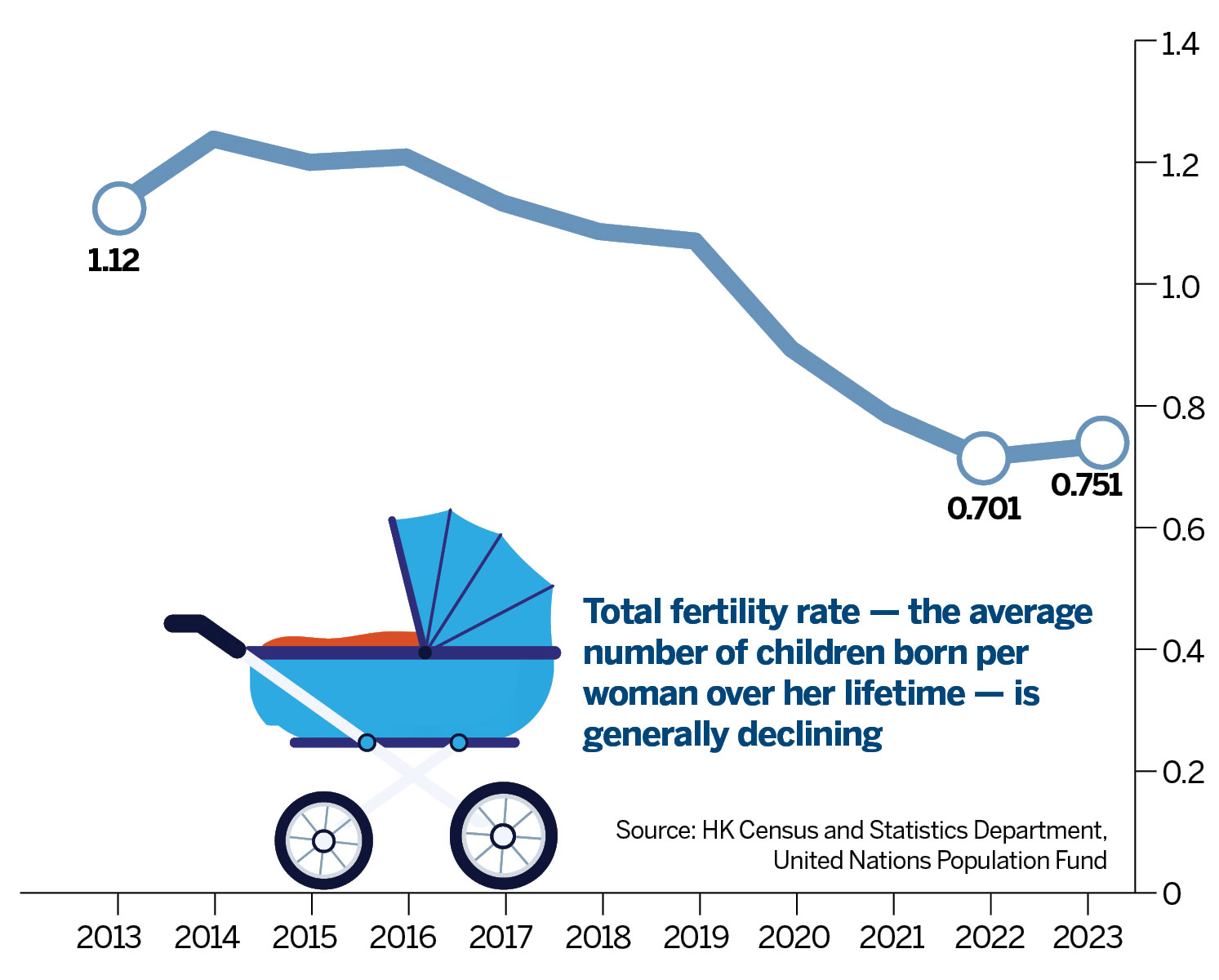
High-tech transformation?
A comprehensive population policy is vital to address the negative impacts of dwindling labor availability and quality, on the city’s long-term economic sustainability, predicated on a high-tech transformation.
Hong Kong’s fertility rate fell to 0.751 births per woman in 2023 — far below the natural population replenishment rate of 2.1 children per woman — and is among the world’s lowest. The HKSAR government estimates that adults aged 65 and above will rise from 20.8 percent of the total population in mid-2022 to 25.3 percent in 2028, and reach 35.1 percent by 2069. The administration expects the city’s population to reach 8.19 million in mid-2046.
The Labour and Welfare Bureau estimates nearly 200,000 people aged 65 or above will be part of the working population in 2027, making them the age group with the largest growth. There will also be more workers over the age of 50, while the number of workers under 50 will shrink. The imbalance in the shortage of young manpower, will negatively impact labor quality for Hong Kong’s high-tech transformation.
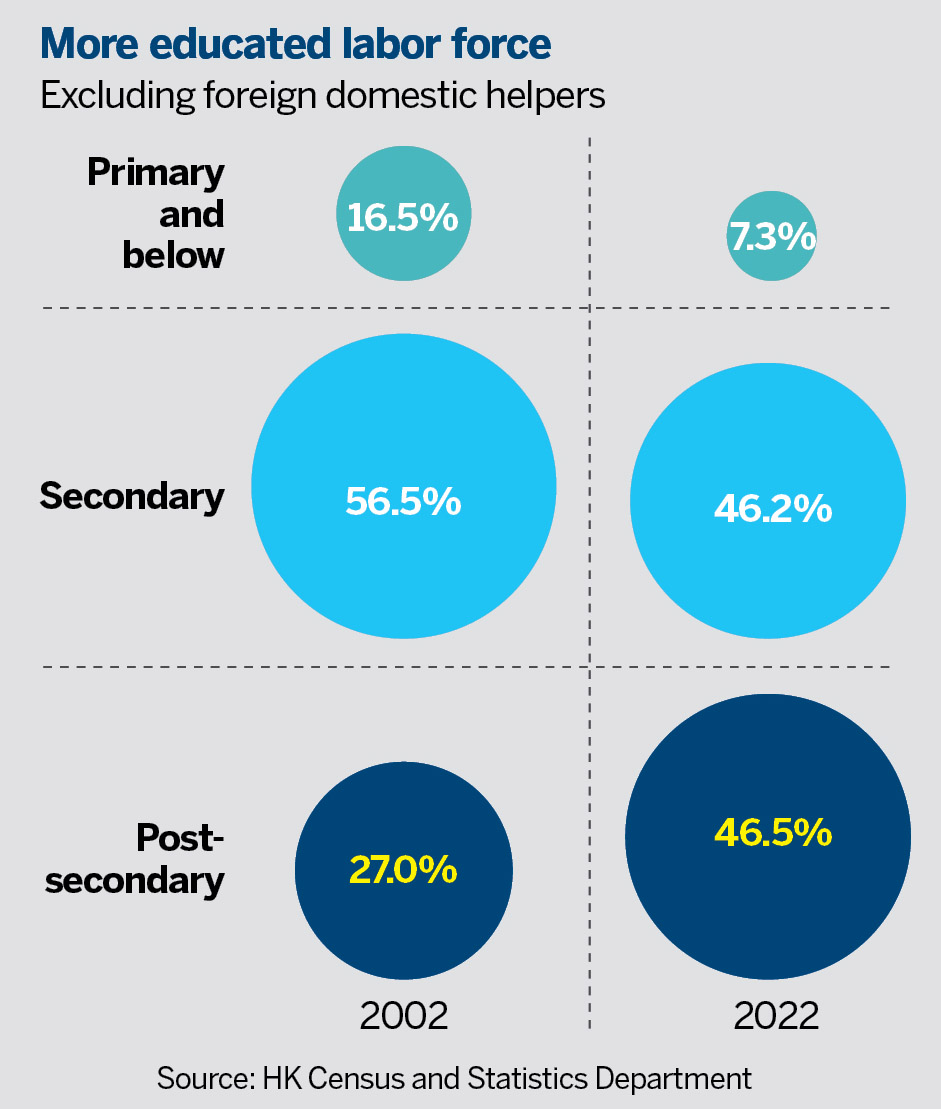
The Bureau estimates that by 2027, Hong Kong will need a workforce of 3.74 million, but the projected manpower supply is only 3.57 million, indicating a shortfall of 170,000. That is only 3 years away, without tangible evidence of any effective correction. This worries economists and legislators.
Lawmakers, economists and think-tank researchers say the administration must produce a comprehensive population policy framework and long-term planning, to tackle issues arising from changes in the working population structure, on labor supply and quality.
The Office of the Government Economist says Hong Kong’s population aging would lower total factor productivity growth, and hence economic growth, by around 0.1 percentage point per annum from 2025 to 2044. An aging population will transmit the negative effect of decreasing labor supply on economic growth.
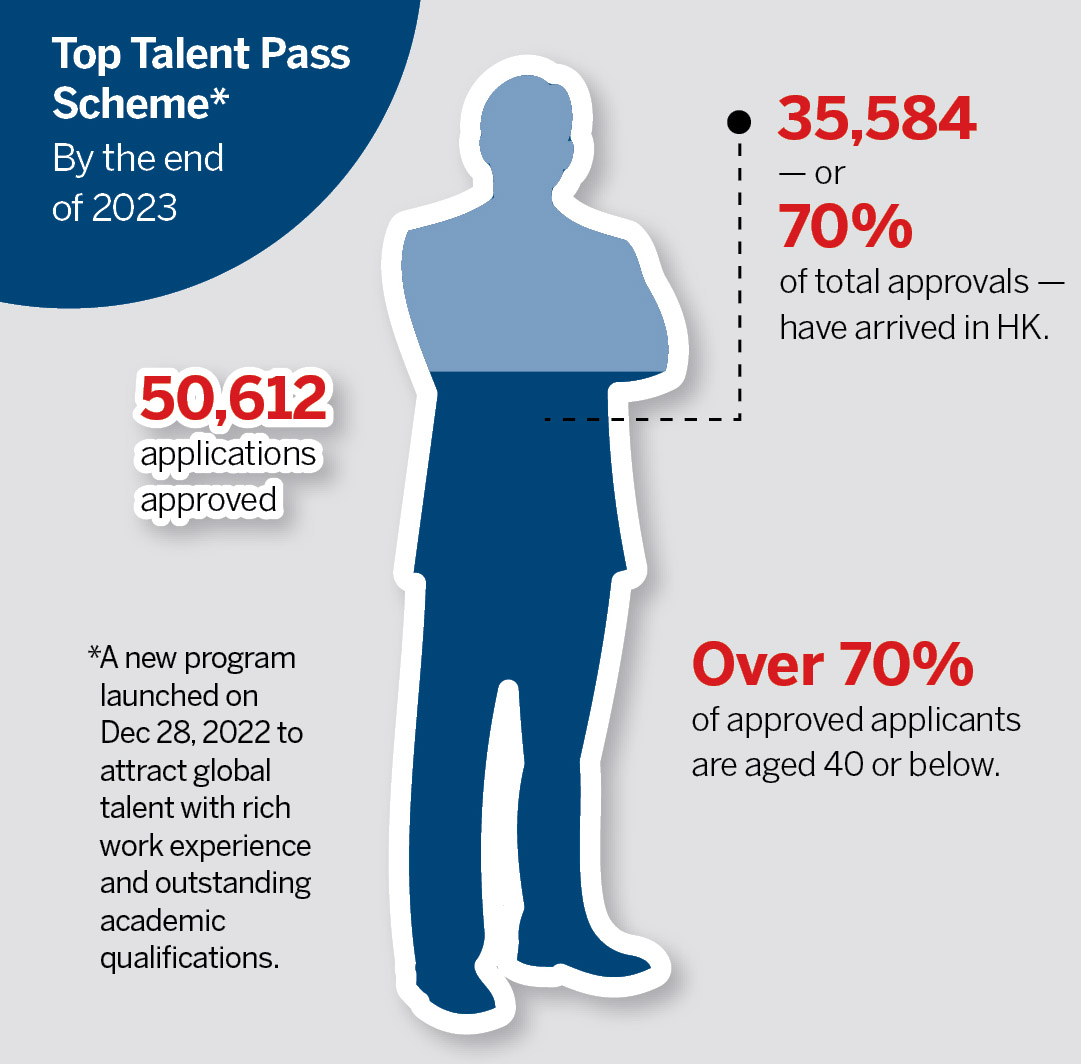
Call for policy bureau
“The government should formulate a high-level mechanism such as a dedicated working group or a new policy bureau to examine various aspects such as boosting the fertility rate, enhancing active aging, bolstering elder and female worker participation, and even developing a silver economy, which are part and parcel of a population policy,” asserts Legislative Council member Eunice Yung.
There is no centralized, coherent government unit, to articulate and implement a population policy, with the Labour and Welfare Bureau shouldering the major responsibility in areas related to local human resource development.
“The proposed working group or a policy bureau should examine the strengths and weaknesses of current policies, as well as provide policy quantification for the relationship between fertility rate and population aging, and the effectiveness of reversing the aging population trend in boosting labor supply and labor quality,” adds Yung.
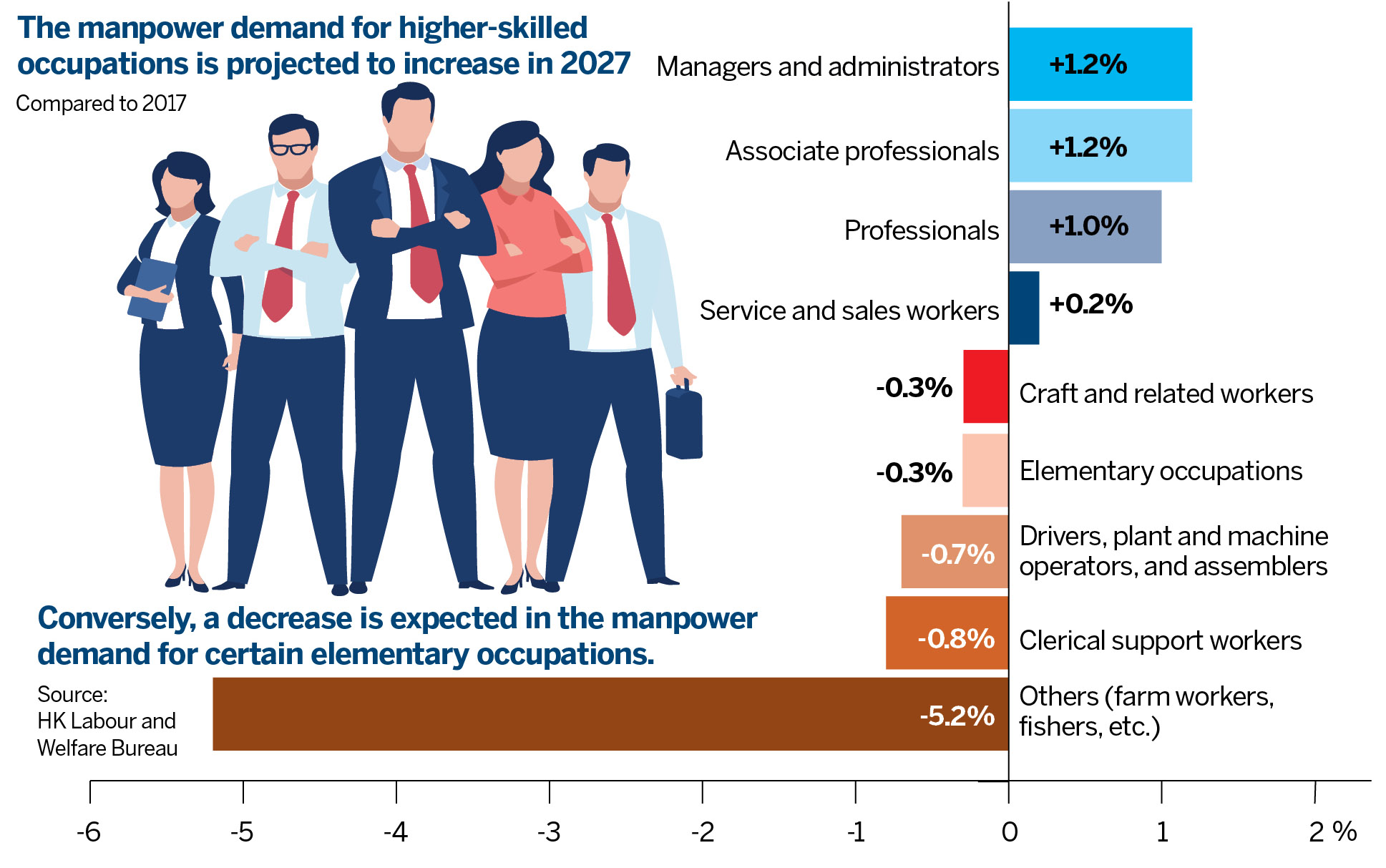
Chief Executive John Lee Ka-chiu’s 2023 Policy Address produced a slew of financial measures, including an unprecedented one-off cash incentive of HK$20,000 ($2,552) for each child born in Hong Kong in the next 3 years to a parent who is a permanent resident. The policy address also unveiled other measures, such as raising the tax deduction ceiling for housing, giving priority to parents in purchasing subsidized flats, or in the allocation of public rental units, and raising the household and child allowances for working families in child-rearing.
Tang Hei-wai, a Victor and William Fung economics professor at the HKU Business School, highlights the importance of engaging in long-term population planning. Boosting the fertility rate is the first policy dimension.
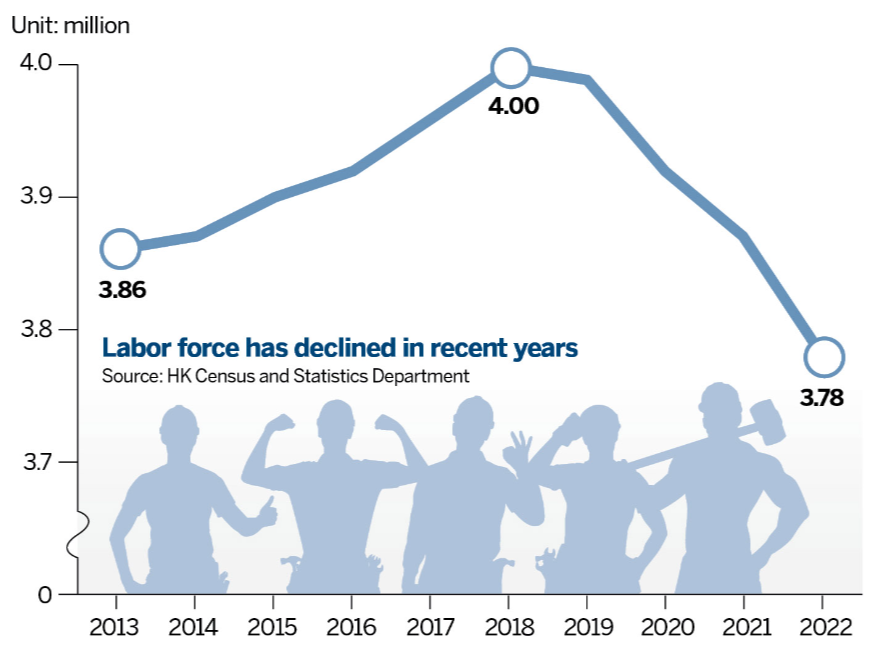
Cash alone not enough
The economics professor starts the argument from the perspective of behavioral economics, saying sometimes young married couples may place more emphasis on short-term factors in deciding whether to raise children. These factors include having an adequate child care center and recreational space, the quality of education, the living environment and the cost of school fees.
Our Hong Kong Foundation Senior Researcher Pascal Siu Yat-kui suggests the government prioritize some family-friendly policies such as flexible work hours, parental leave, and more childcare facilities because these exert less of a financial burden on the administration. It can also establish itself as an exemplary model for private companies to consider programs to reduce long work hours and overtime, to encourage working parents.
In Singapore, employees by December will have the right to formally request more flexible work arrangements such as a four-day work, more work-from-home days, staggered work times and flexible work locations, under the guidelines laid down by the Ministry of Manpower, the National Trades Union Congress, and the Singapore National Employers Federation.
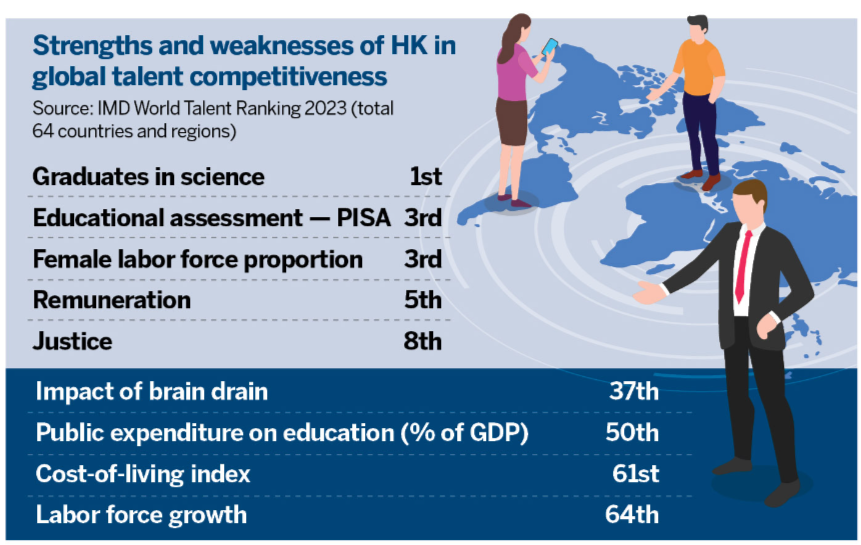
While the guidelines are not legally enforceable, employers in Singapore have to establish a formal process for employees to request flexible work arrangements.
Providing access to flexible work arrangements addresses specific challenges of Singapore, such as a tight labor market, an aging workforce, and the need to empower a diverse workforce for future economic growth.
Enhancing the participation of the elderly and women in the workforce is the second policy dimension in population policy planning.
US-based credit agency Moody’s Investors Service expects Hong Kong to make material gains in workforce participation to achieve potential growth rates of about 2 percent between 2021 and 2030. It says Hong Kong should further ramp up technological adoption in automation and robotics technology to strengthen labor productivity.
The labor force participation rate in Hong Kong has declined since 2019, primarily driven by post-war baby boomers retiring, along with other significant demographic changes. The labor force participation rate declined rapidly from 61.3 percent in 2018 to 57.3 percent in 2023. By 2046, the government expects this ratio will plummet to 51.6 percent.
Both lawmaker Yung and economist Tang reckon the administration can do more to boost elder workforce participation. Tang suggests the government establish an exemplary model by introducing a phase-out period for recruiting retired civil servants, encouraging private companies and public organizations to have more policy flexibility to recruit retirees. Yung suggests that the government assist elders or retirees over 65 years of age in obtaining labor insurance and remove employment barriers, as many are willing to work.
To enhance female workforce participation, Yung says the government and the private sector should provide more facilities to encourage child-rearing, such as childcare center functions for female workers in offices, and increase the overall number of childcare facilities. Such measures would encourage more female workers to take more part-time employment, or receive training to enhance their flexibility.
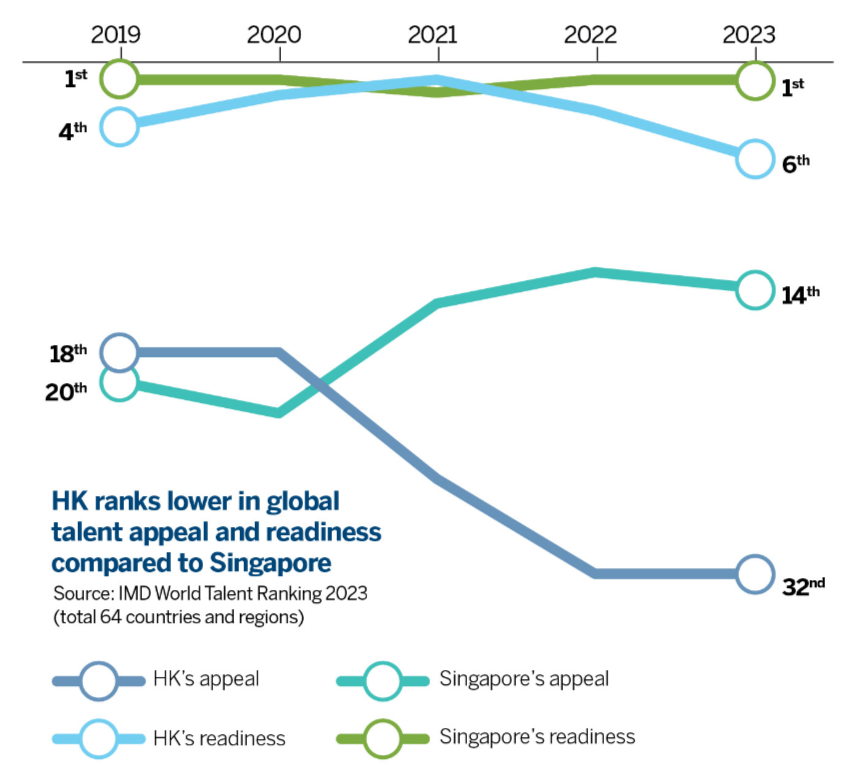
What other options?
The third policy dimension is concerned with attracting overseas talent and importing manual workers as a quick fix in the medium term.
ASEAN+3 Macroeconomic Research Office says labor and talent shortages may increasingly constrain Hong Kong’s economic growth and undermine the city’s competitiveness as a vital financial and business hub. It suggests the government conduct sustained talent attraction and labor recruitment efforts, and develop a comprehensive policy package, such as economic and social inclusion, affordable housing for foreign workers, and finding new jobs for affected local workers.
OHKF’s Siu says the SAR government can learn from the examples of other Asian regions: “Japan and South Korea are expanding their immigration policies to include more open employment visa regimes and support for multicultural families. Singapore offers various programs and incentives to enrich its labor force while Taiwan has implemented policies aimed at enticing foreign workers through health insurance.”
“Singapore is very strategic by examining what type of talent and labor it requires to fit its future economic development 5 to 10 years ahead,” Tang explains. “The city-state imports workers from India, Malaysia and Indonesia to fill manual jobs in construction, infrastructure building, food and catering industry. Its education system nurtures talent locally, while the government continues to attract specific talent globally.”

Where HK once led
Tang urges Hong Kong to formulate its vision for future economic growth, and foster the development of a headquarters economy, before embarking on talent attraction programs.
“When strategic industries of various business segments set up shop in Hong Kong, there will be demand for talent. These enterprises will bring their senior management and technology talents to the city, initiating a virtuous cycle of talent attraction,” says Tang.
Tang sees Hong Kong embarking on high-tech economic transformation, focusing on innovation and technology, as well as new industrialization. However, an aging working population cannot support this kind of economic transformation.
Siu advocates reforming Hong Kong’s education system to nurture more scientific and technical professionals to meet the need for high-level economic transformation.
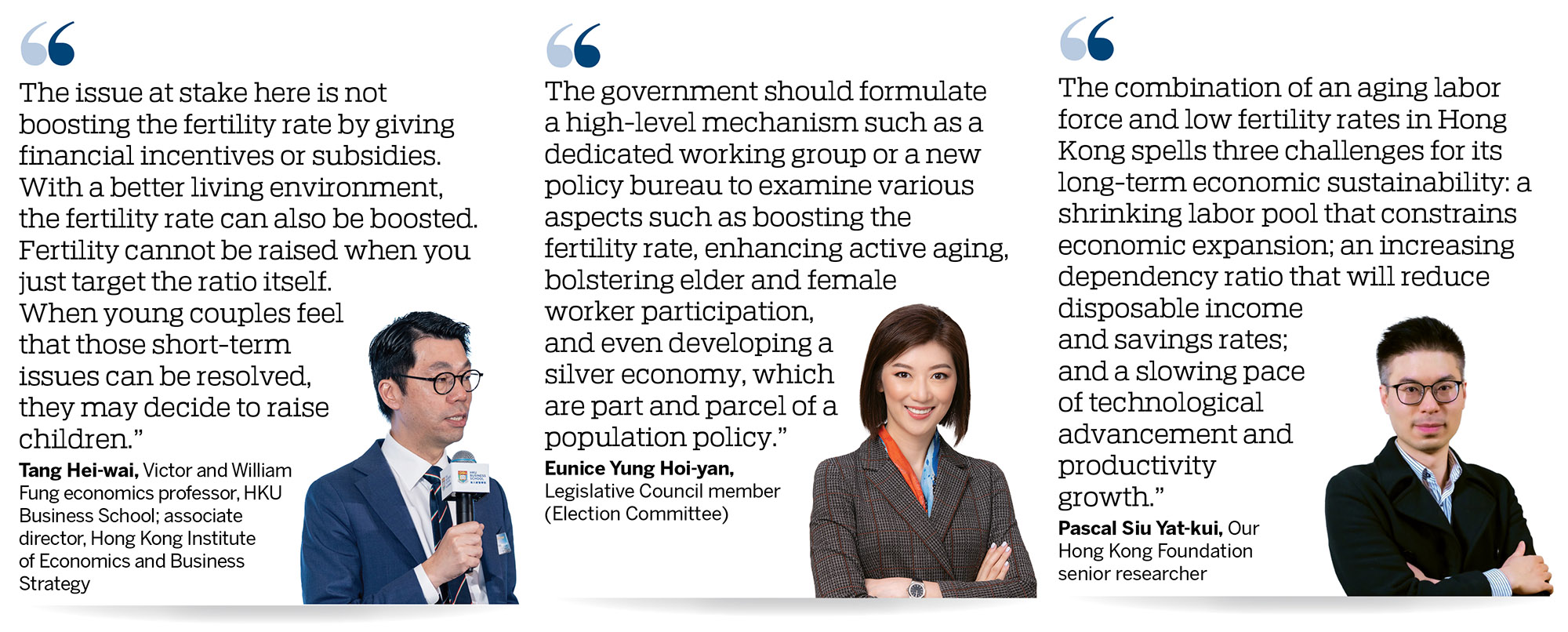
“School-industry partnerships can align school curricula with industry development, and students can gain practical internships provided by industry partners. Collaboration between industry and education can be fostered through internships to train local I&T talent and technicians,” suggests Siu.
A population policy involves a wide range of cross-disciplinary issues such as family-friendly facilities, gender balance, tax breaks, relevant education, social welfare, people-centric town planning, and quality of life measures. Reducing all that to “human resources planning” is not an adequate substitute for a holistic population policy.
What's next?
- Establish high-level body for holistic population policy.
- Boost fertility via child-care centers and parental time-off.
- Increase recruitment of the fit elderly and women.
- Import foreign workers for manual work shortages and selected high-end work.
- Reform tertiary education for I&T transformation.
Contact the writer at oswald@chinadailyhk.com


